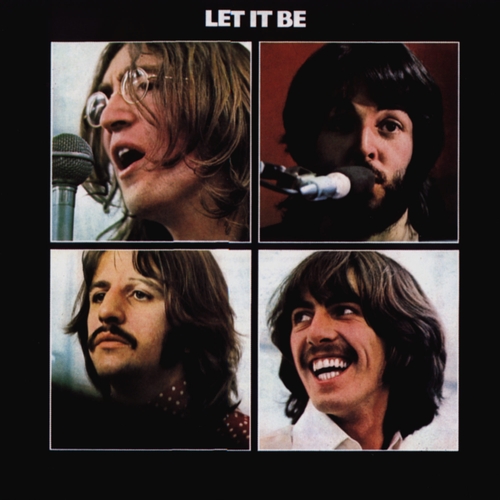
Let It Be (1970)

1.Two of Us
2.Dig A Pony
3.Across the Universe
4.I Me Mine
5.Dig It
6.Let It Be
7.Maggie Mae
8.I've Got A Feeling
9.One After 909
10.The Long and Winding Road
11.For You Blue
12.Get Back
Of all the Beatles’ studio albums, Let It Be is the most fraught—both in its making and in its reception. It was the last of their records to be released, in May 1970, but ironically not the last to be recorded. That distinction belongs to Abbey Road, completed later but issued earlier. The sessions for Let It Be, conducted under the working title Get Back, began in early 1969 and were conceived as a back-to-basics project. The concept was simple enough: abandon studio trickery, strip the sound to its roots, and film the process. What emerged was a documentary, a soundtrack, and a fractured glimpse into the disintegration of a band once defined by cohesion.
The filming, conducted primarily at Twickenham Film Studios and later at the Apple basement, revealed to the public what insiders had long known: the Beatles were no longer a band in any meaningful emotional sense. Interpersonal friction, creative divergence, and sheer fatigue are all visible on screen. The resulting documentary—later re-examined with more nuance in Peter Jackson’s Get Back (2021)—left little doubt that the camaraderie that once defined them had been replaced by tedium, detachment, and malaise. And yet, Let It Be, both in its original release and in its later reconstructed form (Let It Be... Naked, 2003), remains an oddly compelling album—if not a triumphant conclusion, then at least an honest one.
The material itself is frequently strong. Across the Universe, despite Lennon’s dissatisfaction with its various incarnations, is a composition of rare melodic grace and lyrical abstraction. Get Back, once envisioned as the album’s title track, retains its vitality, buoyed by a driving rhythm and Lennon’s gleeful asides. The Long and Winding Road, controversially adorned with strings by producer Phil Spector, became a chart-topping single in the U.S., though McCartney would later condemn the orchestration as antithetical to his intentions. In 2003, this grievance was addressed by issuing a pared-down mix, stripping the arrangement to its skeletal origin.
Other moments are more curious. Dig It and Maggie Mae, brief fragments rather than full compositions, are presented as casual interludes—perhaps a nod to the spontaneous ethos the project initially sought. Harrison’s I Me Mine, added belatedly and recorded without Lennon, and For You Blue, a bluesy shuffle, reaffirm his steady rise as a songwriter of consequence. Two of Us, by McCartney, channels Everly Brothers harmonies through a folk-rock lens, while I’ve Got a Feeling, a hybrid of Lennon and McCartney fragments, simmers with suppressed energy.
The presence of Billy Preston, enlisted by Harrison and often cited as a stabilizing force during the sessions, is felt across the record. His keyboard work adds color and lift, particularly on Get Back and Don't Let Me Down (the latter omitted from the original album but now often restored in expanded editions). His contributions were so integral that whispers of Preston as a possible “fifth Beatle” circulated briefly. The rooftop concert—the band’s final public performance—provides the album’s visual and conceptual climax. While the performance itself is musically tight, it functions more as a symbolic closure than a revelatory live experience. The image of the Beatles, shivering in overcoats atop Apple headquarters, is indelibly etched into the mythology of their ending.
Ultimately, Let It Be is a study in contradiction. It is neither a proper farewell nor an unqualified failure. It exposes the fractures of the Beatles with brutal honesty while still capturing flashes of brilliance that only they could summon. That the sessions were resurrected at all—first by Spector, then decades later in a remixed edition—speaks to the enduring fascination with the band's collapse, as much as with their creation.
Not their finest hour, perhaps. But Let It Be remains essential—not for what it accomplishes, but for what it reveals.
Go back to the main page
Go To Next Review